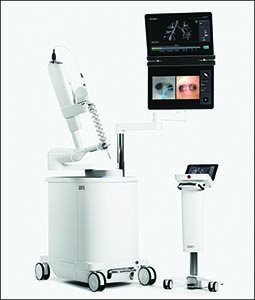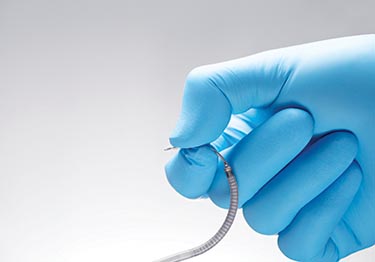
Combined, lung screening and Ion technology save lives.
Research shows that early lung cancer detection is the key to increasing survival rates. Until now, however, “watchful waiting” was the standard of care for many nodules because of difficult-to-reach locations, the small size of the nodule or the invasiveness of the procedure.

Today, the new robotic-assisted Ion Endoluminal System® available at Roper St Francis Healthcare is revolutionizing our treatment approach. Ion allows our teams to:
- perform minimally invasively biopsies on nodules in all 18 sections of the lungs – often in just one hour or less,
- confirm cancer earlier,
- eliminate watchful waiting for many patients,
- begin treatment earlier, if needed, and
- potentially give your patients a 90% chance of survival.
How Ion technology Works
Using a shape-sensing catheter, we can collect biopsies using the CT scan of the lungs as a three-dimensional roadmap. The Ion system’s vision probe sees the way for the catheter to navigate hard-to-reach areas of the lung. A needle collects one or more biopsies, and patients can return home after recovering from anesthesia.


Our thoracic team will offer a clinical recommendation if a nodule is detected.
Roper St. Francis Healthcare’s Multidisciplinary Thoracic Oncology Program team includes pulmonologists, thoracic surgeons, medical oncologists, radiation oncologists, radiologists, pathologists and many others. They will meet and, together, assess the patient’s history and nodule size to develop a recommendation, which may include an Ion-assisted biopsy.
To discuss a patient or refer a patient for a screening or biopsy, call (843) 402-1252.
Your patients should be screened for lung cancer if they:
- Have a 20-year-pack or more smoking history and
- Smoke now or have quit within the past 15 years and
- Are between 50 to 80 years old.
A pack a year is any combination of packs of cigarettes and years equaling 20 (e.g., one pack per day for one year or two packs a day for 10 years).*
*U.S. Preventive Services Task Force
